IF150 USB-Serial Interface
Suggested Design and Self Build Project
LEGAL NOTICE
This IF150 Interface suggested design is exactly this. It
is a design solution suggested by Nick Bailey for which he takes no
legal liability makes no statements about any safety or RFI emissions
conformance and gives no warranty about performance and its suitability
for the intended application. This suggested design is offered
"AS-IS" and anybody who wishes to implement and use this design does so
entirely at their own risk and accepts full responsibility and
liability for their actions in implementing and using the suggested
design and any consequential events or matters arising from their
actions. It is the sole and total responsibility of anybody using
this design to fully satisfy themselves that the design is safe to use
and the intended application is appropriate. In your use of
this design you are also agreeing to "save harmless" ("hold
harmless") Nick Bailey, his family, any family business and
anyone else personally associated with him.
General
The IF150 Interface is my own design suggestion for USB 2.0 to
Lowe HF-150 receiver interface to replace the original and now very
rare Lowe IF-150 Serial Interface.
If you have any question or suggestions then please email me.
Unlike the original IF-150 interface the suggested interface design is
a native USB 2.0 interface not requiring any additional USB to Serial
converter hardware. In addition there is no additional Window's
driver software required to be installed on the PC. A simple .INF
file will take care of everything. The design should work
on both Windows and Linux operating systems. Other devices and
operating systems may also work with the suggested design.
The HF-150 receiver does not have a true RS-232 serial interface
port. This suggested IF150 Interface design takes care of
the required conversion between normal RS-232/serial data flow and the
PPM (pulse position modulation) data stream required by the
receiver.
The suggested hardware design includes opto-isolation providing total
electrical and conductive noise isolation, thus ensuring no
noise/interference is injected into your receiver via the
interface.
I was originally going to produce and sell the IF150 Interface myself
but international approvals (UL & CE) and product liability
insurance for "finished end products" (be they final or prototype
offerings) were legally required. I was advised that I could not
build/manufacture a product, even if I gave it away, without CE
approval in Europe and possibly UL approval in America.
Interestingly the Raspberry Pi faced the same issues. See here: http://www.raspberrypi.org/archives/878
I am thus publishing the IF150 Interface as a suggested design and self
build project.
Compatibility
I can only say that this suggested design works for me and my Lowe
HF-150 receiver.
Software and Hardware Requirements
Any computer device fitted with a USB 1.0, 2.0 or 3.0 port should be
hardware compatible with the suggested IF150 Interface
design. Both Windows and Linux operating systems should work with
the interface design.
Other devices/operating systems may work but I am unable to verify or
guarantee this.
To drive the suggested IF150 Interface design requires any
HF-150 compatible receiver control program, such as my HF150
Control Program, or any other program or a simple terminal program
that is capable of sending supported commands to the interface.
Interface Commands and Features
The suggested IF150 Interface design together with the firmware
supports all the same commands and protocol as the original Lowe IF-150
interface.
Lowe IF-150 Commands are:
- FRQ - FRQ <value in kHz> <CR>
- MOD - MOD <mode> <CR>
- STO - STO <memory number> <CR>
- RCL - RCL <memory number> <CR>
Lowe IF-150 Protocol:
- 1200 Baud
- 8 data bits
- no parity
- 1 or 2 stop bits
Additional Commands: Some additional commands may be supported
(depending on final firmware) but they do not affect Lowe commands and
these additional commands may eventually be used by my HF150
Control Program.
Additional Feature:
An additional feature of the IF150 Interface design is that USB
data flow is bi-directional so the interface can talk back/respond to
the sending program. An example of an already implemented command
is IDENT.
This identify command means that any driving program can
identify and differentiate the IF150 Interface from the Lowe
IF-150 and any other interface. Note! The IF150
Interface to HF-150 receiver is still and can only ever be a
unidirectional send path.
Hardware Design / Implementation
The IF150 Interface suggested design is based on the Arduino
Uno R3 module. This provides a top quality, well proven and
tested base hardware platform to which my suggested design adds a
daughter card with the necessary opto-isolation, level shifting and
driver circuits to allow the interface to connect to the HF-150
receiver.
The required Firmware software is written by me using
the Arduino
Development Environment.
Interface Design Pictures
Here are a collection of images that show the component parts of the
design and give an idea of the simplicty of the project to build.
Arduino Uno R3 Module
This is the heart of the suggested design. There is plenty of
information about Arduino ( http://arduino.cc/
) out there on the web. I chose the Arduino Uno as opposed to any
of the other great little micro controller project platforms/kits
because of the tight self contained USB interface. Also it is one
of the smaller units available and the price is very competitive at
around 20 UK Pounds, 30 US dollars or 20 Euros.
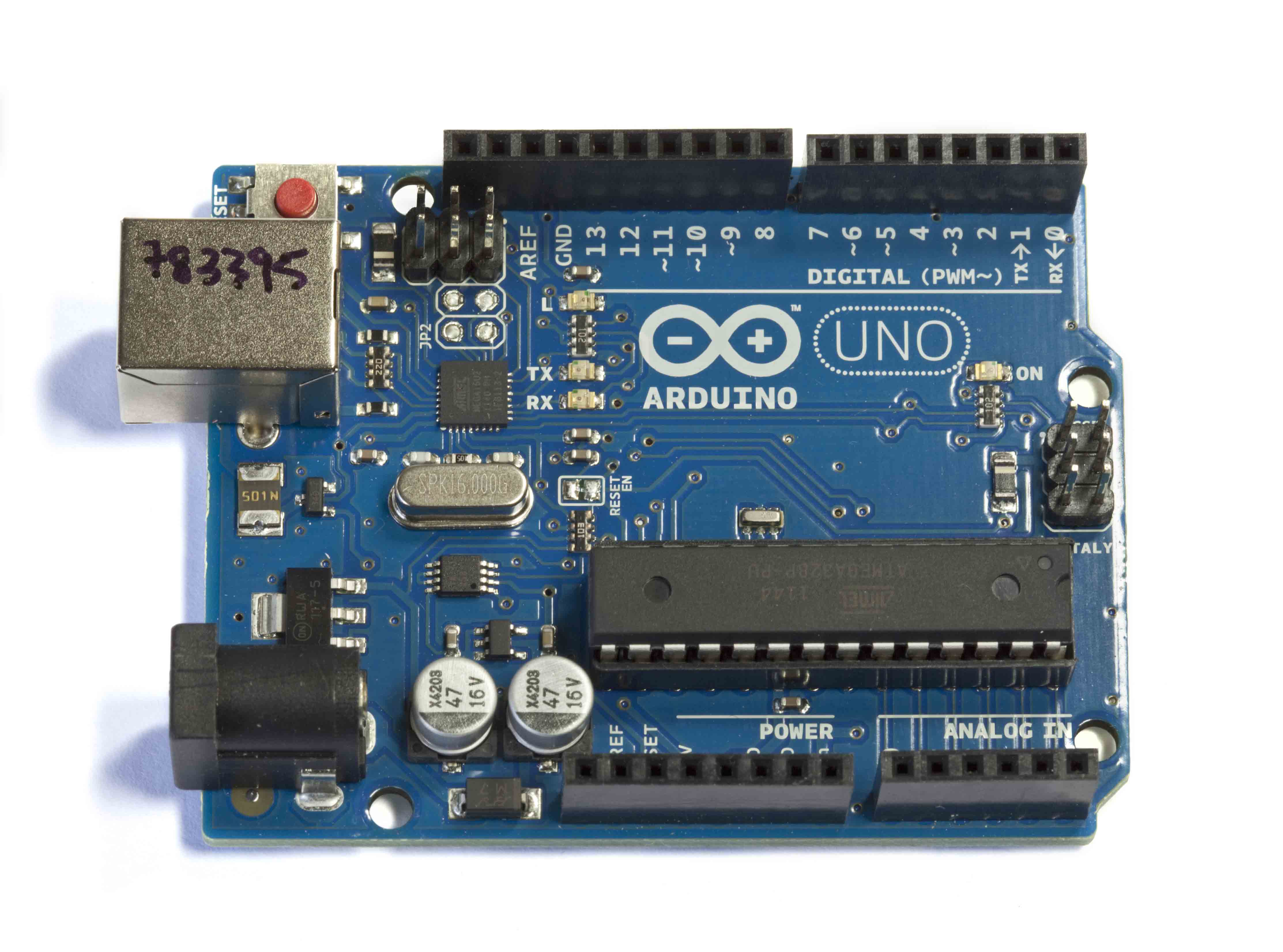
Opto-Isolation and Level Shifting Board
This board carries my electronic circuit design to allow the Arduino
Uno R3 Board to safely connected to the Lowe HF-150 receiver.
The HF-150 receiver key pad circuitry to where this suggested interface
design has to connect operates at a 12V level and is current limited to
approximately 150mA. The Amtel AVR ATMega328P and family of
processors input and output pins are not rated to source or sink more
than 40mA or operate at more than 6V. Clearly some level shifting
is required. At the same time it makes absolute sense to provide
opto-isolation for electrical and noise isolation between the USB
connection and the HF-150 receiver.
The electronic components are built onto the Arduino Proto Shield Board
R3. As can be seen there are only eight components required plus
a connecting cable. This board plugs on top of the Arduino Uno R3
Board completing the electrical design.
Top side View

Bottom side view
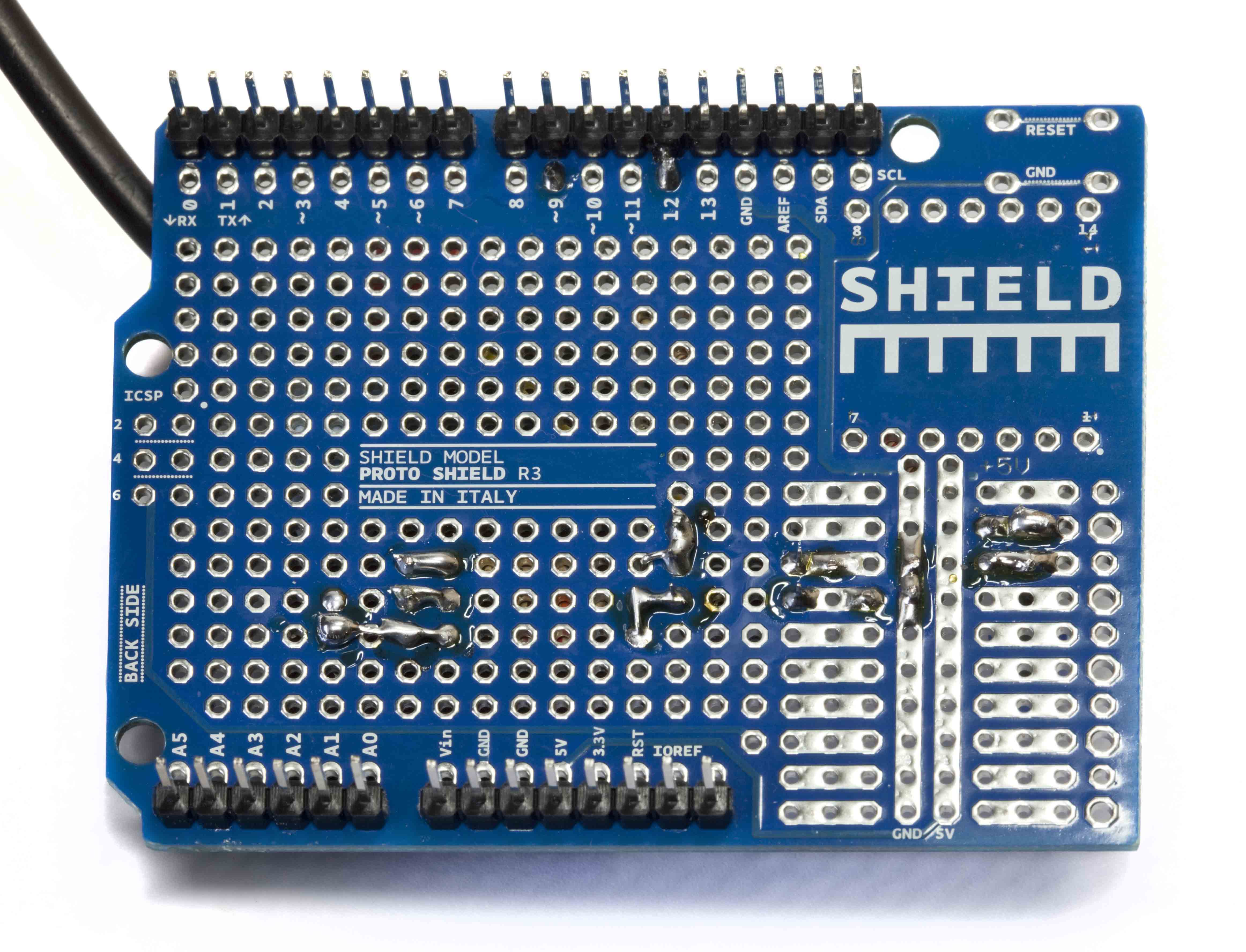
Circuit Diagram
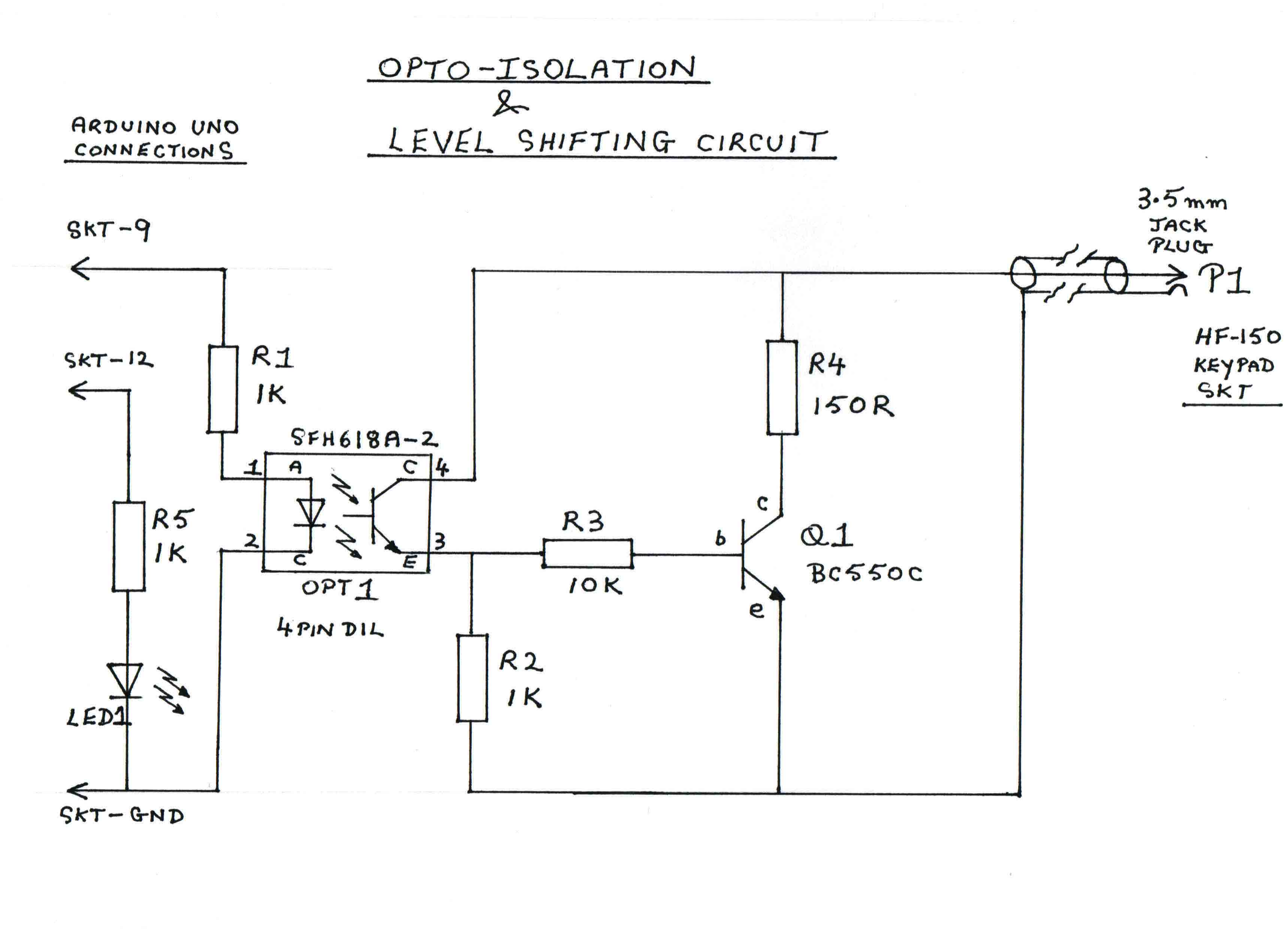
Mechanical Packaging
Designing or finding good, effective and easy to build packaging is
always a problem. Simple plastic cases, potting cases and so on
are cheap and readily available but these often leave you with problems
to solve like internal hardware mounting and a professional looking
finish.
For my proposed design I have sacrificed cost and size for easy
internal hardware mounting, minimal drilling (two holes only), no
screws and a quality look.
The solution involves the use of the Arduino A000009 Case which is
specifically designed to house Arduino modules.
Here is a view of the above boards and the case bottom together.
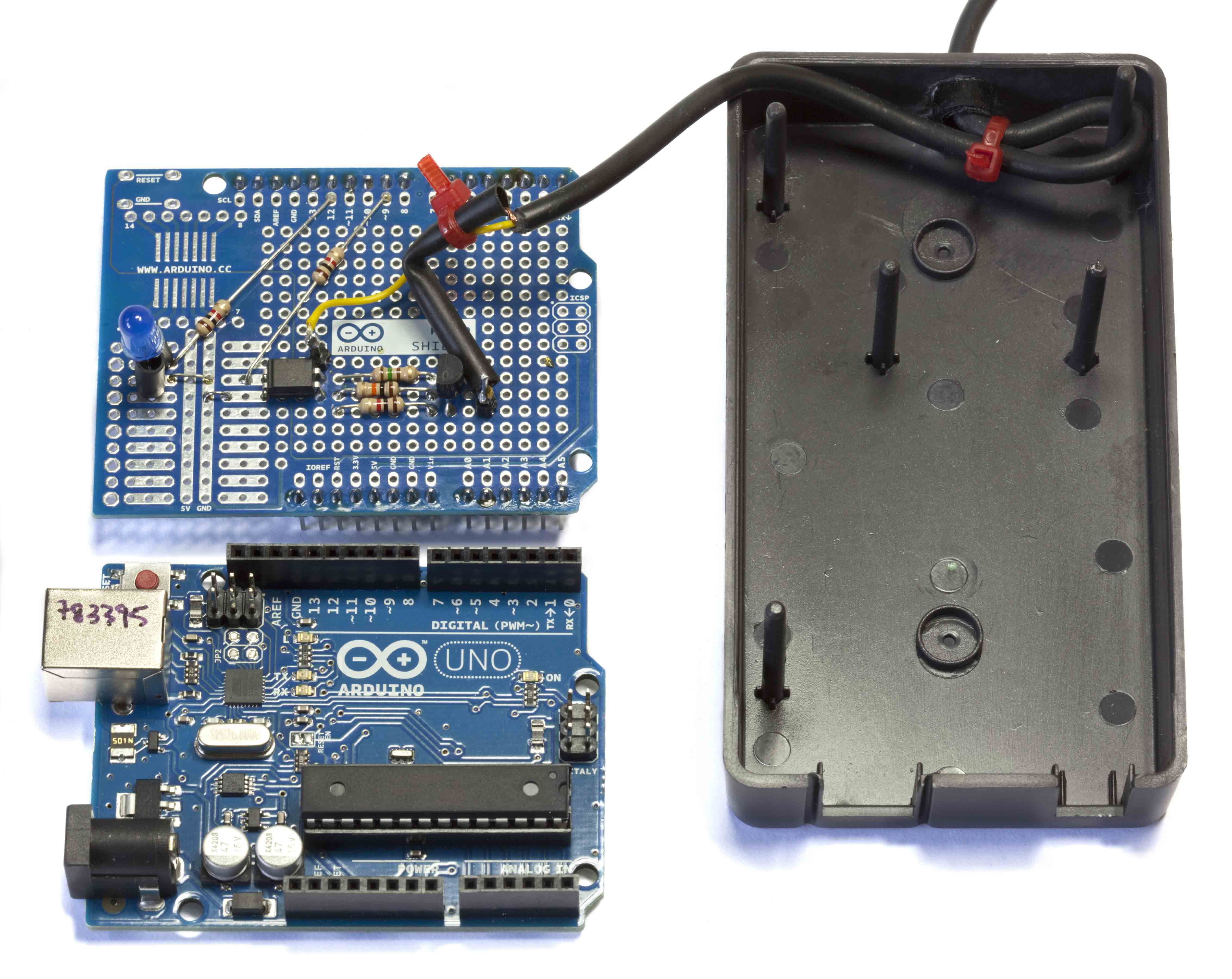
And here they are assembled into the case.

Final Suggested Design Overall View
If you implement this suggested design then you should end up with
something looking like this.
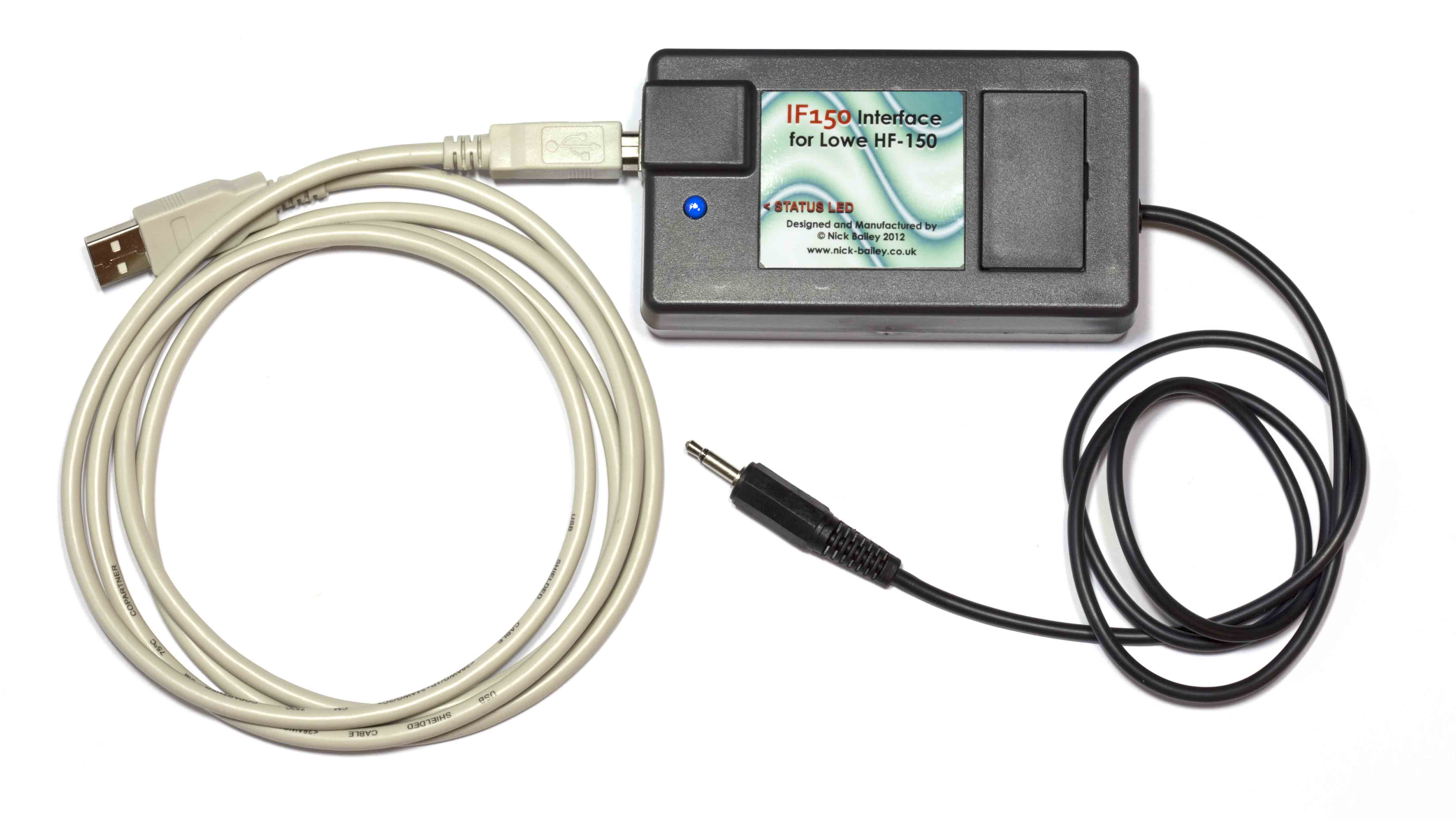
The smart label is optional but the Arduino case top has a purpose
designed recessed label area so it seems silly not to make use of it.
Close up the case top cover looks like this.
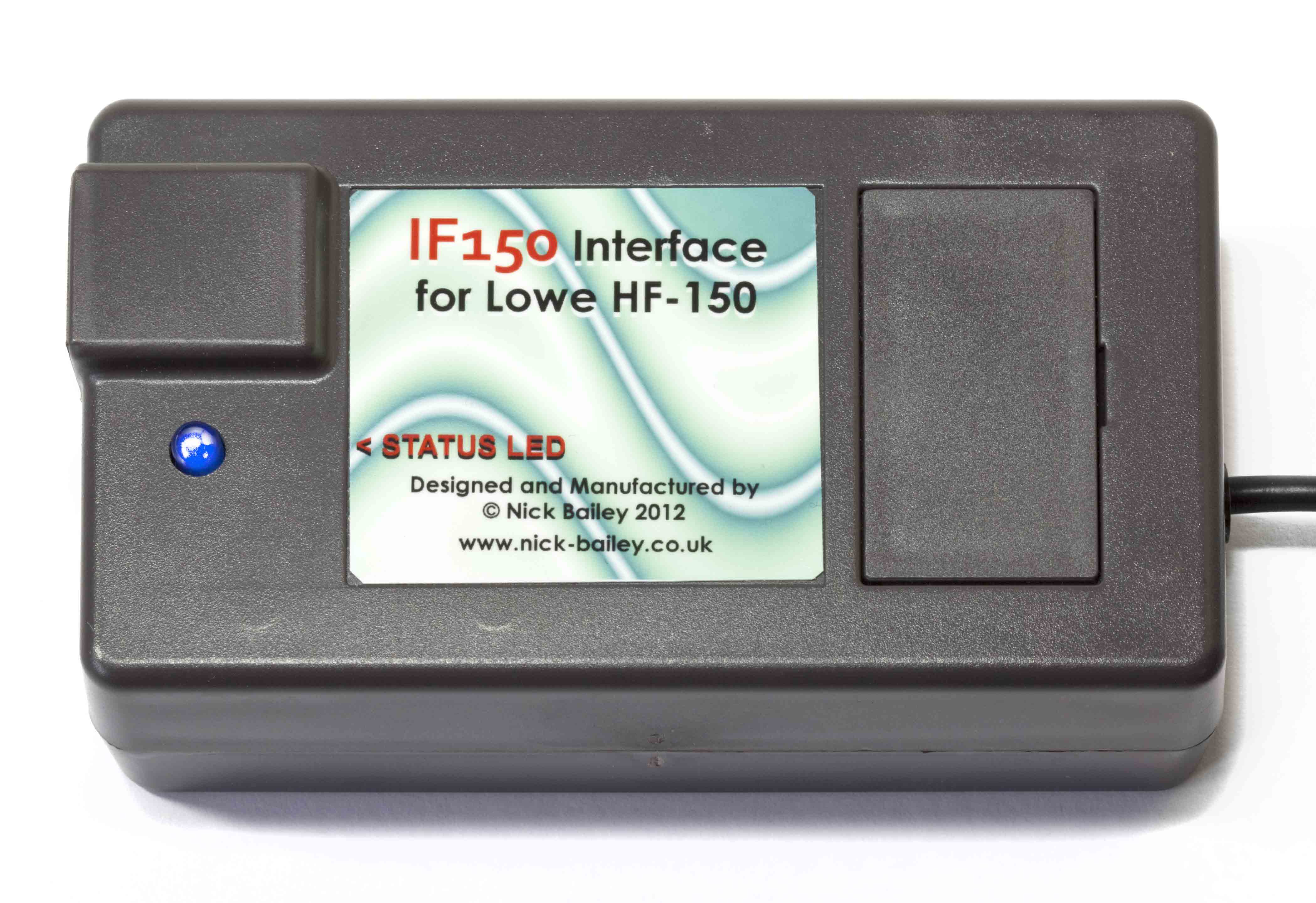
Firmware
The Firmware I am releasing as Careware/Charity Ware.
Full details can be found here.
Interested or Want to Build this Project?
If you are interested or want to build this project then you will need
to read the IF150 Project Build
information.
If you have any questions then I will be happy to try and answer them
for you. My contact informaton is available at the bottom of this
page.
Meanwhile, if you have a Lowe HF-150 Receiver, or any other interface
compatible Lowe/other make of receiver then you might like to visit my HF150 Control Program page.
Contact Information
If you want to or need to contact me then please Email:
IF-150
|
@
|
nick-bailey
|
.
|
co
|
.
|
uk
|
Top Of Page
© Nick Bailey 2012-2020







